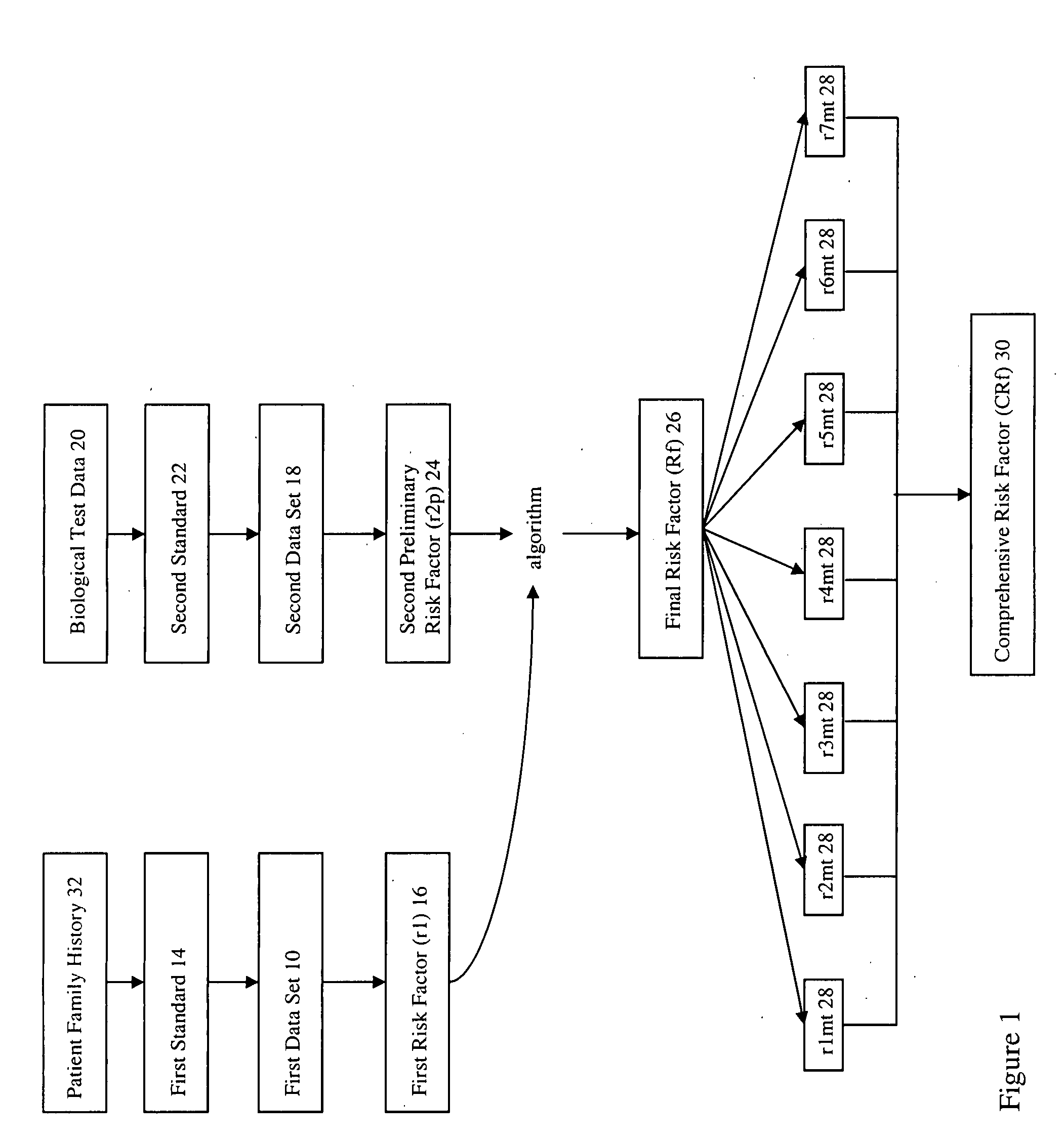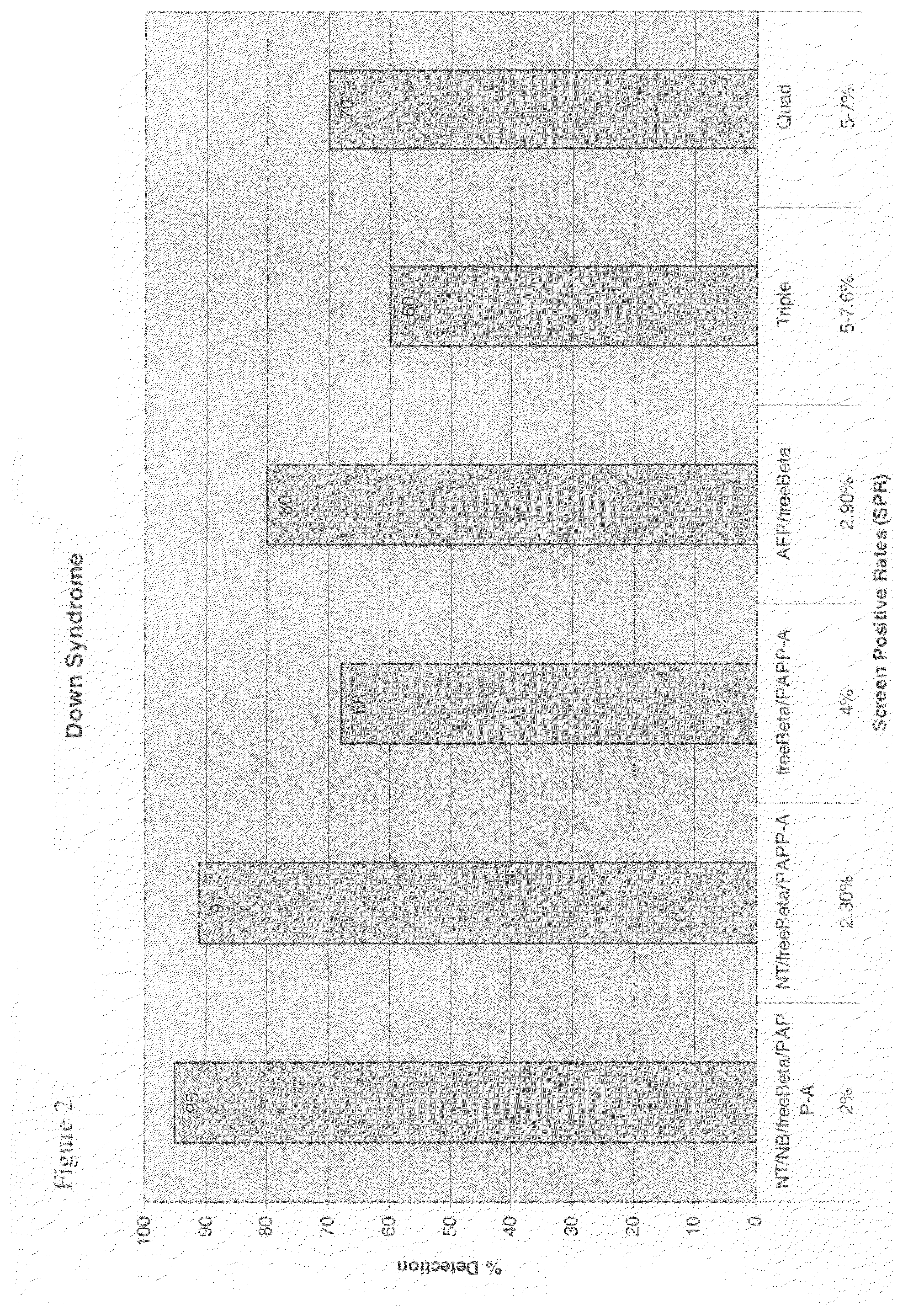Method of genetic screening and analysis
a genetic screening and analysis technology, applied in the field of genetic screening and analysis, can solve the problems of increased miscarriage risk, infection or leakage, and increased risks for both women and fetuses, and achieve the effect of increasing the accuracy of prediction
- Summary
- Abstract
- Description
- Claims
- Application Information
AI Technical Summary
Benefits of technology
Problems solved by technology
Method used
Image
Examples
examples
[0022]The following Table is a comparison of prenatal screening programs, including detection rates and screen positive rates for determining the weight of each risk factor. More weight is given for the more effective risk factors. Combining ultrasound measurements for Nuchal Translucency, dried blood freeBeta, and PAPP-A provide higher detection than older methods of screening for Down syndrome and Trisomy 18. Nasal bone or Tricuspid Flow can be added to increase detection by 4-5%.
First Trimester Detection Rates & Screen Positive RatesEarlyResearch / ExperimentalScreen ®Non-FMFWithNT / hCG / PAPP-IntegratedEarly Screen ®NasalA (No USAandFMF / NT / freeBeta / PAPP-ABoneFreeBeta / PPAP-ARef.Sequential*Down Syndrome (DS)91% at 2.3%95% at68% at 4.5%82% at 5-7%Varies*2%(82-86%)Trisomy 1897% at 0.4%98% at>90% at 0.4%No USA Ref.No USA0.4%Ref.Trisomy 1397% at 0.1%98% at90% at 0.1%NoNo0.1%Twins80% at 7.2%80% at50%No USA Ref.No7.2%Heart Defeats / Anomalies40% / Yes40% / No / YesNoNo USAYesRef.Diabetics / Multiples / ...
PUM
| Property | Measurement | Unit |
|---|---|---|
| Length | aaaaa | aaaaa |
| Time | aaaaa | aaaaa |
| Time | aaaaa | aaaaa |
Abstract
Description
Claims
Application Information
 Login to View More
Login to View More - R&D
- Intellectual Property
- Life Sciences
- Materials
- Tech Scout
- Unparalleled Data Quality
- Higher Quality Content
- 60% Fewer Hallucinations
Browse by: Latest US Patents, China's latest patents, Technical Efficacy Thesaurus, Application Domain, Technology Topic, Popular Technical Reports.
© 2025 PatSnap. All rights reserved.Legal|Privacy policy|Modern Slavery Act Transparency Statement|Sitemap|About US| Contact US: help@patsnap.com



